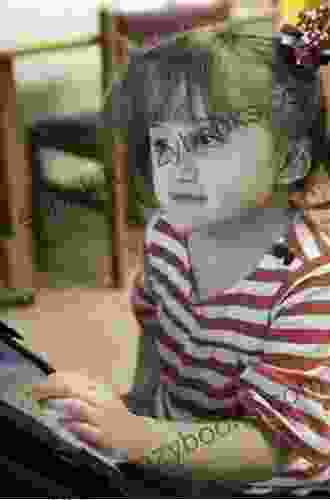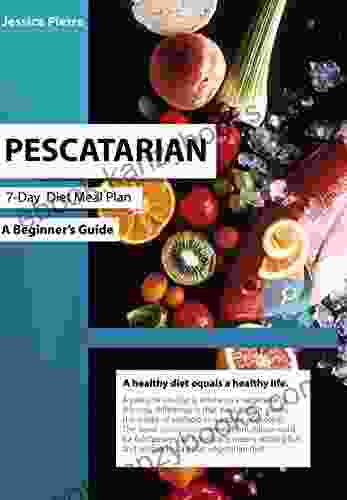Working with Students Who are Blind or Visually Impaired: A Comprehensive Guide for Educators

A Journey into Inclusive Education: Understanding and Supporting the Needs of Visually Impaired Students
In the tapestry of education, every thread holds equal value, and the inclusion of students with disabilities is a vibrant hue that enriches the fabric of learning. Among these unique individuals, those who are blind or visually impaired require specialized support and understanding from educators. This article serves as a comprehensive guide, equipping teachers with the knowledge and strategies to effectively meet the needs of these exceptional learners.
Embracing Diversity: Recognizing the Spectrum of Visual Impairments
Visual impairments encompass a wide range of conditions that affect an individual's ability to see. This spectrum includes:
5 out of 5
| Language | : | English |
| File size | : | 3547 KB |
| Text-to-Speech | : | Enabled |
| Screen Reader | : | Supported |
| Enhanced typesetting | : | Enabled |
| Word Wise | : | Enabled |
| Print length | : | 552 pages |
- Low vision: Reduced visual acuity or field of vision that cannot be corrected with conventional eyeglasses or contact lenses.
- Legal blindness: Visual acuity of 20/200 or less in the better eye with the best possible correction.
- Blindness: Total or near-total loss of sight.
It is crucial for educators to understand that visual impairments vary greatly in terms of severity and impact, and each student's needs should be assessed individually.
Creating an Accessible Learning Environment: Adaptive Tools and Strategies
To ensure equitable access to education for students with visual impairments, the learning environment must be adapted to accommodate their unique needs. This includes providing:
Assistive Technology:
* Screen readers: Software that reads aloud digital text and provides access to computers and electronic devices. * Magnification software: Enlarges text and images on the screen to make them easier to read. * Braille displays: Output devices that translate digital text into Braille, allowing blind students to read and navigate without sight.
Adaptive Materials:
* Large print materials: Textbooks, handouts, and other printed materials enlarged to make them accessible to students with low vision. * Braille materials: Printed materials translated into Braille, enabling blind students to access the same content as their sighted peers. * Tactile graphics: Raised or textured images and diagrams that allow students with visual impairments to explore and understand visual concepts.
Pedagogical Strategies:
* Descriptive narration: Providing verbal descriptions of visual elements such as images, videos, and demonstrations. * Multisensory experiences: Incorporating tactile, auditory, and kinesthetic activities to enhance learning and engagement. * Peer support: Encouraging sighted students to assist their visually impaired peers in reading, note-taking, and other tasks.
Empowering Students through Collaboration and Communication
Effective communication is the cornerstone of successful instruction for students with visual impairments. Educators should:
* Use clear and concise language: Avoid jargon or complex vocabulary that may be difficult to understand. * Provide advance notice: Inform students of changes in schedule, activities, or assignments to allow them to prepare and access necessary support. * Seek input from students: Ask students about their preferred methods of communication and learning, and adjust accordingly. * Collaborate with parents and professionals: Work closely with parents, vision specialists, and other professionals to develop a comprehensive support plan for each student.
Assessment and Accommodations: Ensuring Equitable Evaluations
Assessments should be modified to ensure that students with visual impairments can demonstrate their knowledge and skills fairly. This includes:
* Providing extended time: Granting additional time for tests and assignments to accommodate the use of assistive technology or adaptive materials. * Offering alternative assessment formats: Allowing students to choose from multiple assessment formats, such as oral exams, projects, or written tests with enlarged print or Braille. * Removing visual barriers: Eliminating visual distractions and providing a quiet testing environment to minimize distractions and anxiety.
Building a Positive and Inclusive Classroom Culture
A supportive and inclusive classroom environment fosters the success of all students, including those with visual impairments. Educators can:
* Set high expectations: Believe in the abilities of students with visual impairments and challenge them to reach their full potential. * Create a welcoming space: Use inclusive language and encourage respect and empathy among all students. * Address stereotypes: Educate students about common misconceptions and stereotypes associated with visual impairments. * Celebrate diversity: Recognize and celebrate the unique strengths and perspectives of visually impaired students.
: Empowering the Visionaries of Tomorrow
Working with students who are blind or visually impaired is a rewarding and transformative experience. By understanding their diverse needs, providing adaptive tools and strategies, fostering inclusive communication, and creating a supportive classroom culture, educators can empower these students to thrive academically, socially, and emotionally.
As we embrace the principles of inclusive education, let us recognize that every student has the potential to succeed and contribute to the world. By ensuring equitable access to education for all, we are not only fulfilling our moral obligation but also investing in a brighter future for our communities and society as a whole.
5 out of 5
| Language | : | English |
| File size | : | 3547 KB |
| Text-to-Speech | : | Enabled |
| Screen Reader | : | Supported |
| Enhanced typesetting | : | Enabled |
| Word Wise | : | Enabled |
| Print length | : | 552 pages |
Do you want to contribute by writing guest posts on this blog?
Please contact us and send us a resume of previous articles that you have written.
 Book
Book Novel
Novel Page
Page Chapter
Chapter Text
Text Story
Story Genre
Genre Reader
Reader Library
Library Paperback
Paperback E-book
E-book Magazine
Magazine Newspaper
Newspaper Paragraph
Paragraph Sentence
Sentence Bookmark
Bookmark Shelf
Shelf Glossary
Glossary Bibliography
Bibliography Foreword
Foreword Preface
Preface Synopsis
Synopsis Annotation
Annotation Footnote
Footnote Manuscript
Manuscript Scroll
Scroll Codex
Codex Tome
Tome Bestseller
Bestseller Classics
Classics Library card
Library card Narrative
Narrative Biography
Biography Autobiography
Autobiography Memoir
Memoir Reference
Reference Encyclopedia
Encyclopedia Urs Gasser
Urs Gasser Read Spear
Read Spear Paul Wade
Paul Wade Paul A Offit
Paul A Offit Marvin Bartlett
Marvin Bartlett Magdalena Wszelaki
Magdalena Wszelaki Mike Mcguigan
Mike Mcguigan P J Night
P J Night Kyle Pratt
Kyle Pratt Robert J Marckini
Robert J Marckini Sal Gilbertie
Sal Gilbertie Vladimir Antonov
Vladimir Antonov Tommi Sundqvist
Tommi Sundqvist Kristin Leal
Kristin Leal Michael Moynihan
Michael Moynihan Sarah Waldman
Sarah Waldman Rachel Pollack
Rachel Pollack Sara Tercero
Sara Tercero Marcello Spinella
Marcello Spinella Micha Archer
Micha Archer
Light bulbAdvertise smarter! Our strategic ad space ensures maximum exposure. Reserve your spot today!
 Curtis StewartFollow ·11k
Curtis StewartFollow ·11k Henry David ThoreauFollow ·18.1k
Henry David ThoreauFollow ·18.1k Bill GrantFollow ·6.5k
Bill GrantFollow ·6.5k Theodore MitchellFollow ·3.6k
Theodore MitchellFollow ·3.6k Al FosterFollow ·4.6k
Al FosterFollow ·4.6k Patrick RothfussFollow ·17.2k
Patrick RothfussFollow ·17.2k Reginald CoxFollow ·6.7k
Reginald CoxFollow ·6.7k Gerald BellFollow ·15.2k
Gerald BellFollow ·15.2k

 Edward Reed
Edward ReedWhat Our Lungs Teach Us About Our Origins, Ourselves, and...
Our lungs, the unseen heroes of our existence,...

 Jonathan Hayes
Jonathan HayesFood Additives and Human Health: Unlocking the Secrets...
In the modern era,...

 Gabriel Garcia Marquez
Gabriel Garcia Marquez101 Grilled Seafood Recipes: Elevate Your Seafood...
Discover the Art...

 Javier Bell
Javier BellFundamentals of Applied Animal Nutrition: A Comprehensive...
Animal nutrition is a critical aspect of...

 Devon Mitchell
Devon MitchellUnleash Your Sweet Tooth: Dive into the Delightful World...
: Step into a Culinary Paradise Prepare to...

 Voltaire
VoltaireOver 50 Delicious Dishes Made With This Miracle...
Are you looking for new...
5 out of 5
| Language | : | English |
| File size | : | 3547 KB |
| Text-to-Speech | : | Enabled |
| Screen Reader | : | Supported |
| Enhanced typesetting | : | Enabled |
| Word Wise | : | Enabled |
| Print length | : | 552 pages |












